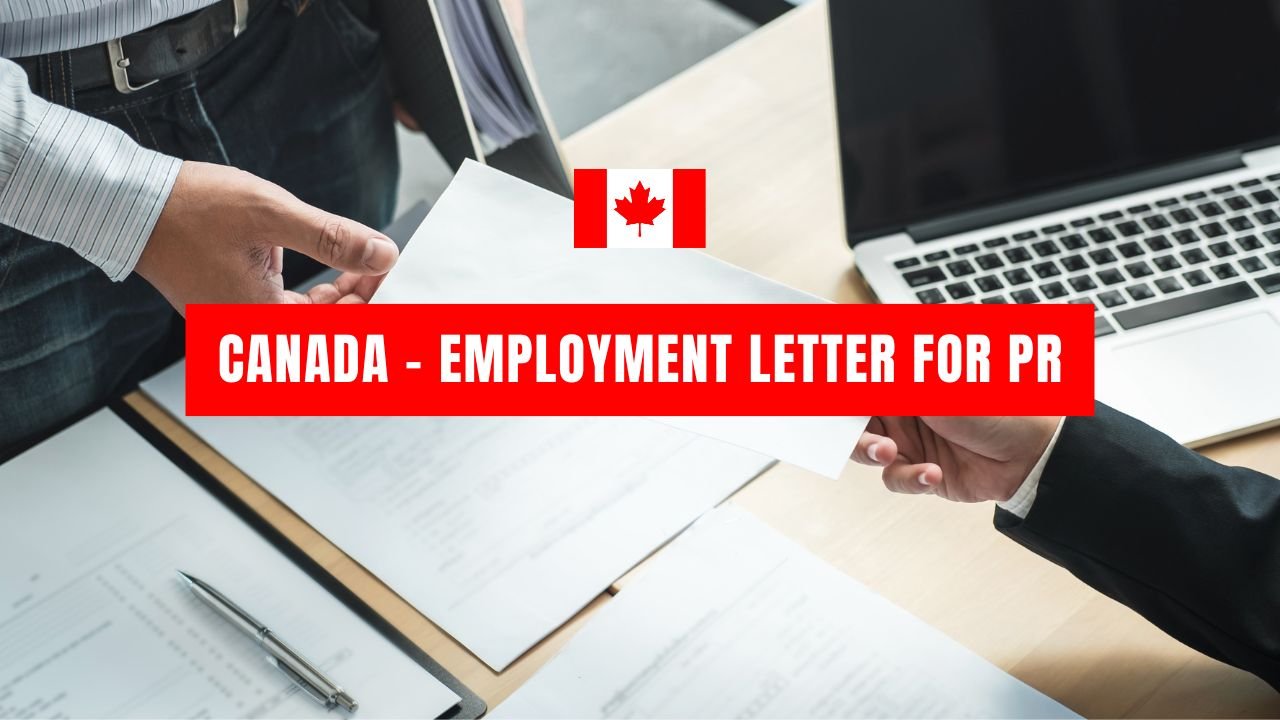Your Canada PR application can succeed or fail based on your employment letter. Many applicants face delays, additional document requests (ADR), or outright refusal because their employment letters don’t meet IRCC’s strict requirements. In this guide, we’ll break down exactly what your Canada PR employment letter must include — and what to avoid — to help you submit a strong, compliant application.
Why Employment Letters Matter in Canada PR
IRCC uses employment letters to verify your work experience, which directly affects:
- Your CRS points in Express Entry
- Your eligibility for federal and provincial programs (like CEC, FSW, PNPs)
- Your claimed NOC code alignment
Without a proper letter, IRCC may not award points for your work experience, or worse — they could refuse your application for misrepresentation.
Canada PR Employment Letter: What Must Be Included?
For a letter to be accepted by IRCC, it must contain all of the following:
✅ Official company letterhead with address, phone number, and email
✅ Your full name
✅ Your job title
✅ Your start date and end date (or state if you are currently employed)
✅ Number of hours worked per week (e.g., full-time = 30+ hours)
✅ Annual salary plus benefits
✅ A detailed list of your main duties and responsibilities (aligned to the NOC code you are claiming)
✅ Name, title, and signature of your supervisor or HR representative
Common Mistakes in Canada PR Employment Letters
❌ Generic HR letters that only confirm your job title and dates without duties, hours, or salary
❌ No letterhead or missing contact details
❌ No signature or no authority contact
❌ Duties that don’t align with the NOC code you claimed in your PR application
❌ Fake or altered letters (this can lead to a 5-year ban for misrepresentation)
❌ Copy-pasting job duties word-for-word from the NOC website — IRCC expects the duties listed to genuinely match what you did, not just the NOC text.
What to Do If You Can’t Get a Proper Canada PR Employment Letter
If your company has closed down or refuses to issue the required letter:
- Gather alternative proof: pay stubs, tax documents, contracts, appraisal reports.
- Write a letter of explanation (LOE) clearly outlining your efforts to obtain the letter and attach supporting documents.
- Include supervisor affidavits if available.
FAQs
Do I need a separate letter for each job?
✅ Yes — each job (and each NOC code if different) requires its own letter.
What if my employer no longer exists?
✅ Provide as much alternative documentation as possible, and explain the situation clearly in your LOE.
Final Thoughts
Your employment reference letter is one of the most critical documents in your Canada PR file. Don’t leave it to chance. If you need help reviewing your letter, or if you’re facing challenges getting a proper letter, contact us today — we can guide you through the process to ensure your application is as strong as possible.
⚠️ Disclaimer
This guide provides general information about Canada PR employment letters based on IRCC’s current requirements. Every case is unique, and immigration policies or document expectations can change over time. To be sure your documents meet the latest standards for your specific situation, we strongly recommend booking a consultation with our team.












